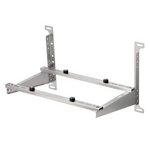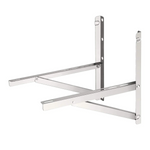By: Simon Cartagena
To tell you the truth, all you need to know is it will keep you cool and comfortable in the summer. But if we want to get down to the “nitty-gritty”, let us start with the basics: Chemistry.
When in liquid form, molecules are in a state that allows them to have enough attraction between each other to stay together. Picture the molecules in this liquid sitting perfectly still and close together, almost as if they were cold and trying to keep each other warm. This happens when the temperature in the atmosphere is not cold enough to freeze the liquid and not hot enough to evaporate it.

When temperature rises and the liquid reaches its boiling point, the molecules inside the liquid become “restless” and start moving, fast. As the molecules start moving faster and faster, the intermolecular attractions that hold them together break. When the bonds break, the liquid begins to evaporate and becomes a gas, and when it does, it absorbs the heat in the atmosphere surrounding it.
This is what happens when the body sweats: sooner or later the sweat on your skin will evaporate (the molecules will move faster) and this way it will carry heat away from your body in the form of gas.

You must be thinking: “And how does that relate to my air conditioner?”. Well, air conditioners, much like the body, are highly dependent on a liquid to accomplish their primary function. In their case, they use a liquid called a “refrigerant”. The refrigerant will constantly move from a liquid state to a gaseous state and back to a liquid state. You know where we're going with this now.
The Way it Works:
1. Evaporating the Refrigerant
Refrigerants have a very low boiling point. The air conditioner passes the refrigerant through coils and exposes those coils to the room temperature air in your house. Because of its low boiling point, the air that is being sucked into the air conditioner carries enough heat to turn the refrigerant into gas form.

2. Turning Warm Air into Cold Air
This means there is more heat in the refrigerant (now in gas form) than in the air that surrounds the coils that carry it. The air conditioner then takes that cold air and fans it by the coils that contain the cold refrigerant (in liquid form) and back into your room.

Interval: How it Works in Other Systems
This is probably easier to understand if you are picturing a small window air conditioner. In the case of a central air conditioner, the system funnels the air through a labyrinth of ducts before reaching the cold coils in the system. It’s the same concept but on a larger scale, with more airflow and a bigger system.
And if you are looking at a multi-story building then most probably the temperature control is run by a chilled water system or a cooling tower. They are both types of air conditioning systems but use different technology adapted to cool bigger .
3. Completing the Cycle, Back to Liquid Form
The air conditioner now needs to take the refrigerant in gas form and turn it back into a liquid. It moves the gaseous form through the coils and through a compressor that, well, compresses the molecules once again. And ‘Voila!’ Liquid form again.

Using the compressor is what accounts for most of the energy consumed by the air conditioner. This means an energy-saving compressor is a synonym for money-saving A/C.
4. Getting Rid of the Warm Air
But if we create cool air by turning the liquid into gas, it means we are creating heat by turning the gas back into liquid, right? The heat that the gas was carrying is now in the air that surrounds the coils that carry the liquid form of the refrigerant (referred to as condenser coils). The air conditioner takes that air, fans it in the opposite direction and dumps it outside, where it’s already hot and humid anyways.

The A/C goes through the same process in a loop, repeatedly, until the air in the room reaches the temperature you set it to on your thermostat. Once the temperature in the air matches that on the thermostat, the air conditioner enters a state of “maintenance” where it runs the loop only intending to maintain the temperature in the room.
Reaching the Desired Aircon Temperature
If you are the curious type, you’re probably wondering, how does the A/C know it reached the temperature goal? Well, when the air in your room is sucked into the air conditioner, it passes a temperature reading sensor, AKA, a temperature controller (or thermometer if that makes it easier for you). The air conditioning system then takes that read and compares it to the value set on your thermostat to see if it matches and evaluates how hard it must keep working to keep it.
With central systems, the thermostat is found on the wall, which means the system is comparing the temperature to the place where the thermostat is located, but with TOSOT Window Air Conditioners the thermostat is located on your remote control. And where is your remote control now? Probably with you.
What ARE Refrigerants Exactly?
There are many different substances known as refrigerants today, but some serve the purpose of cooling homes better than others. All of them are used, well, for refrigerating, duh! But this could be for home use, food storage, chemical refrigeration, and many other purposes. Each refrigerant has its chemical properties and characteristics that make it fit for its desired function, but to cool a home, the key characteristics are:
- A Low Boiling Point
- Good Heat Conductor and Absorber
- Non-Flammable
- Non-toxic
- Easy to Find
- Environmentally Friendly
Remember, not all refrigerants are safe, and some may even be damaging to the environment. Potentially destroying the ozone layer and acting as greenhouse gases. Approved refrigerants in the U.S.A. are Butane, Isobutane, Propane and Ethane, and other HFC substances. The most commonly used refrigerant is CO2, which is also a greenhouse gas but less damaging than others. At TOSOT we use nothing but the best materials and work our hardest to deliver products that contribute to making your life on earth better, not shorter. That is why we only use HFC (hydrofluorocarbon) refrigerants which are considered by experts to be a greener alternative to other types of elements.
If this article inspired you to learn more, we would love to keep doing it with you. Visit us on our YouTube Channel for more interesting information or visit us on our Facebook page and let us know any other interesting facts you want to share about window air conditioners
Want more tips like these?
Subscribe to our newsletter so you don't miss out any of our latest tips:
Related Articles
7 Benefits of Window Air Conditioners
8 Ways to Stay Cool this Summer
Use information at your own risk: The information presented is intended for educational purposes only and is not intended to be a substitute for professional advice, diagnosis or treatment. Never disregard professional medical or home improvement advice. The information and suggestions should be discussed with a professional. You are responsible for independently verifying the information if you intend to rely upon or use it in any way. You use all information at your own risk.







